What to Eat and Drink in Sarajevo, Bosnia & Herzegovina
There’s plenty to do in Sarajevo – explore the Old Town, visit the spot that started World War I, take a cable car up to an abandoned Olympic Bobsled track and more. However, one of the best things about visiting a new destination is sampling their local cuisine!
Read: Things to Do in Sarajevo, Bosnia and Herzegovina
Due to 400 years of Ottoman rule, traditional Bosnian food is reminiscent of Mediterranean and Turkish cuisine. Bosnian dishes are light and flavourful, typically meat-heavy with a generous dose of spices.
Dig into these next time you’re in Sarajevo:
Burek
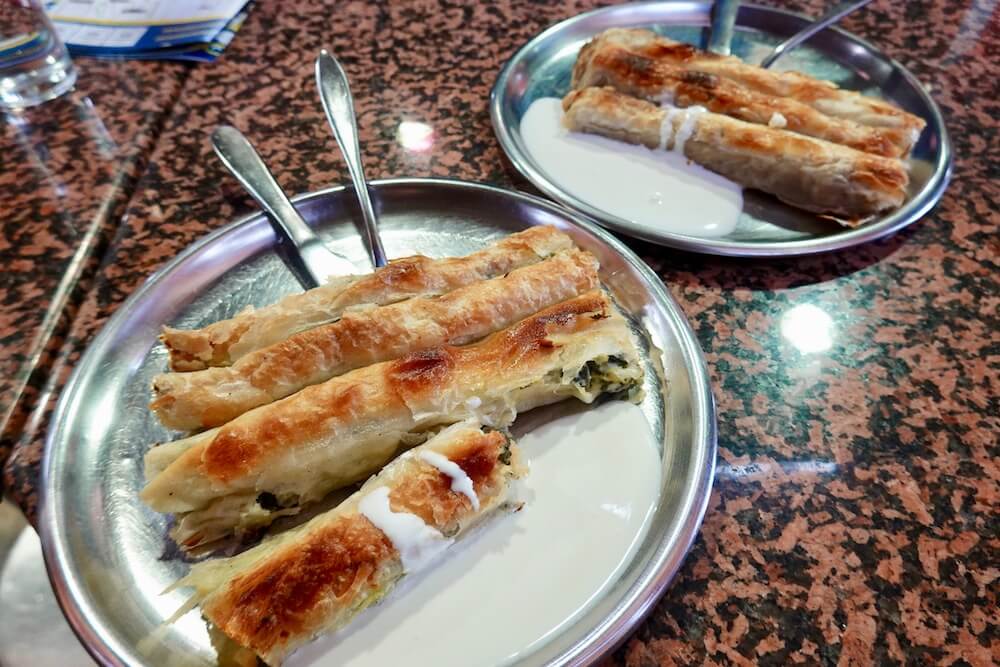
Burek is a light flaky pastry containing various fillings. Popular fillings include cottage cheese (“Sirnica”), spinach and cheese (“Zeljanica”), potato (“Krompirusa”) or meat. These can be found in many bakeries all over Sarajevo but a popular place to try Burek would be at Buregdzinica, which is located in the heart of the Old Town.
Burek makes for a tasty and filling meal but it does tend to get a little greasy. You can also choose to top your Burek with yogurt or sour cream.
Buregdzinica
Address: Bravadziluk Old Town, Sarajevo Bosnia and Herzegovina
Opening hours: 8am to 11pm, daily
Cevapi
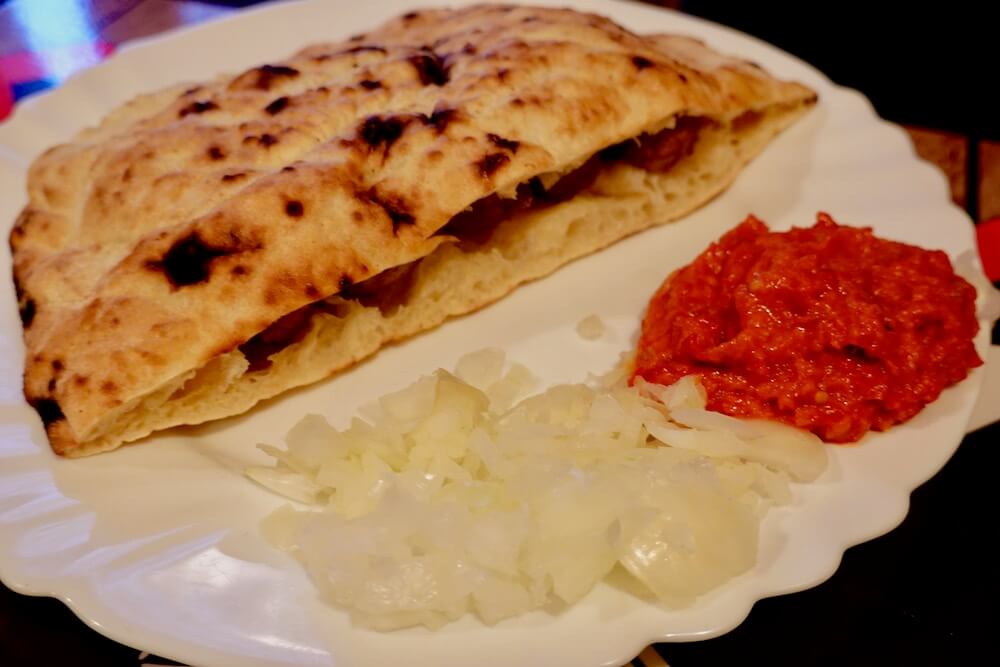
Cevapi primarily comprises a dish of grilled meat – commonly a mix of beef and lamb – wrapped in Somun, a flaky flatbread. The dish is often accompanied by raw onions and a roasted red pepper sauce. Some restaurants also serve the dish with a side of Kaymak, a creamy and salty cheese. Cevapi is also known as Bosnia’s national dish!
Locals love to get their Cevapi fix at Cevabdzinica Zeljo in the Old Town, which is said to serve some of the best Cevapi in Sarajevo.
Cevabdzinica Zeljo
Address: Kundurdžiluk, Sarajevo Bosnia and Herzegovina
Opening hours: 9am to 11pm, daily
Bosanski Lonac
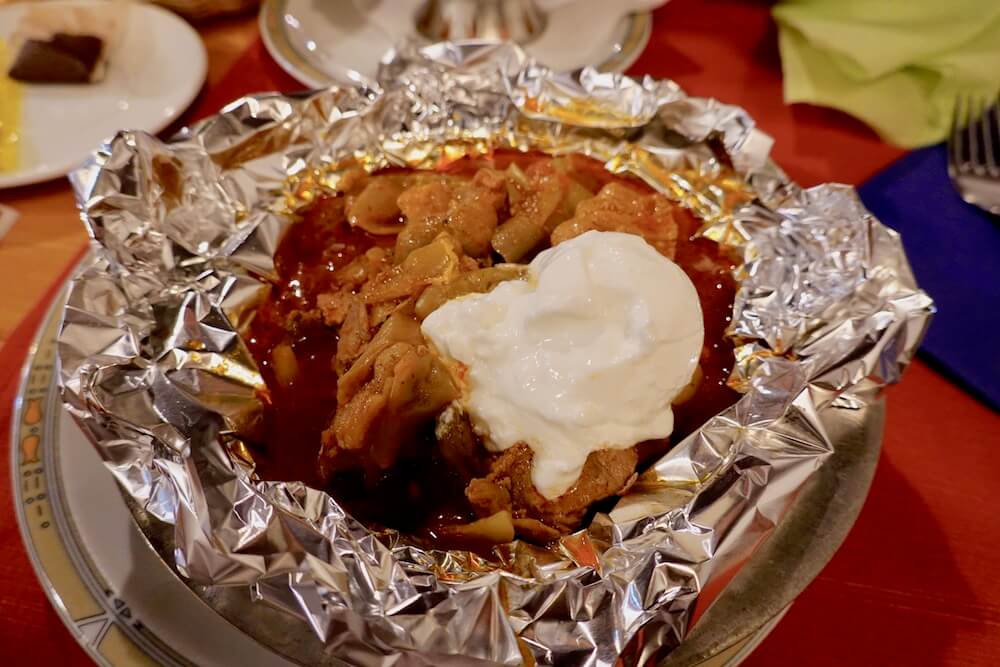
Colloquially known as the ‘Bosnian Pot’, Bosanski Lonac is one of Bosnia’s national dishes. It comprises a hearty meat and vegetable stew. It’s cooked in a rather unique way – a pot is filled with alternating layers of large pieces of meat and vegetables. The concoction is covered with water and simmered for hours on end, resulting in a delicious broth and stew.
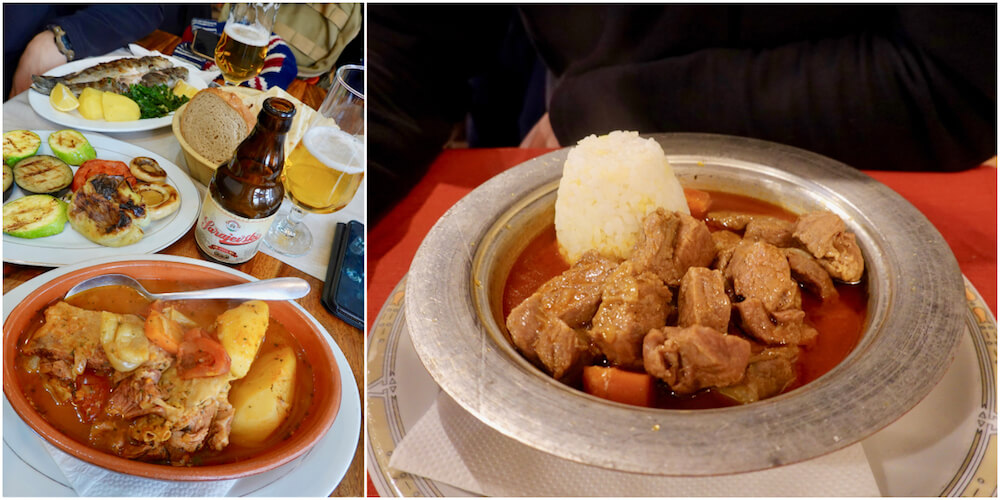
This was my favourite thing to eat in Bosnia! There are many different varieties of Bosanski Lonac but the 3 main ingredients always remain the same – potatoes, carrots and two to three different kinds of meat. The dish can be also be topped with all types of vegetables and interestingly, it’s sometimes seen as a representation of Bosnia’s diverse population, which is made out of Bosnian Muslims, Serbs and Croatians.
A favourite Bosnian Pot haunt is Dzenita, a charming traditional restaurant in Sarajevo’s Old Town. Dzenita is also well known for its delectable grill offerings.
Dzenita
Address: Prote Bakovica 10, Sarajevo Bosnia and Herzegovina
Opening hours: 8am to 10pm, daily

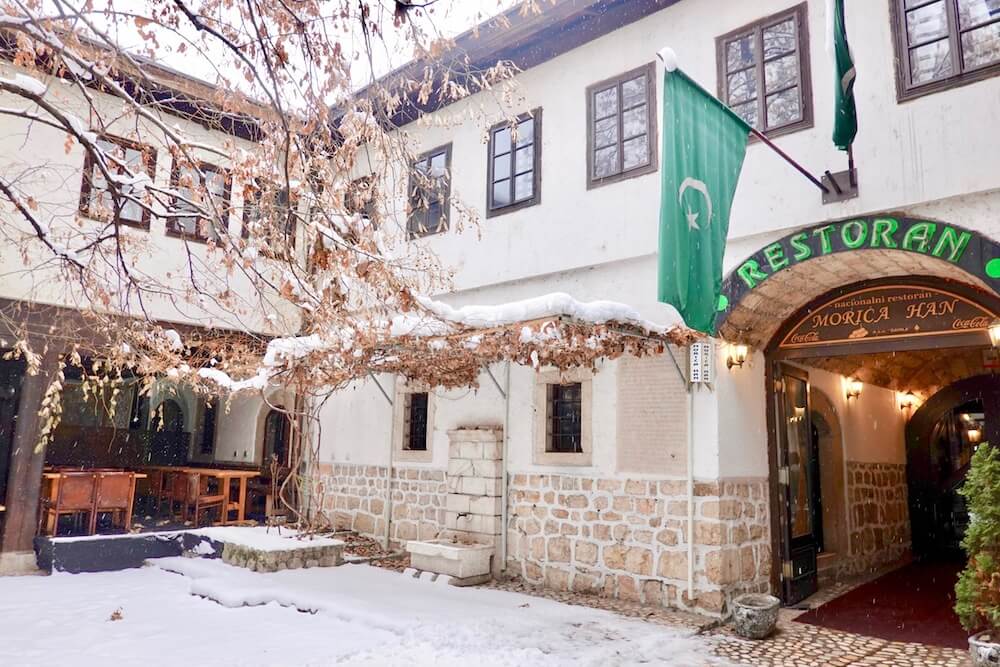
A traditional restaurant that serves a good Bosanski Lonac is Morica Han, a cosy establishment located inside a little courtyard. Morica Han has an interesting history as well; the ‘Han’ (roadside inn) was built in 1551 and is currently the only surviving ‘Han’ in Sarajevo. It was initially destroyed by a fire in 1697, but has since been reconstructed in its original design. Morica Han was also a ‘Caravanserai’, which housed merchant caravans and its horses back during Ottoman rule.
Morica Han
Address: Saraci 77 Bascarsija, Sarajevo 71000 Bosnia and Herzegovina
Opening hours: 8am to 10pm, daily
Klepe

Klepe are the Bosnian version of dumplings, where a chewy dough skin is stuffed with meat (usually lamb or beef) and cottage cheese. These dumplings are then steamed to achieve a tender texture. These remind me somewhat of ravioli!
Klepe is often served with yoghurt and garlic sauce. Sometimes, the dish is drizzled with some mild chilli oil.
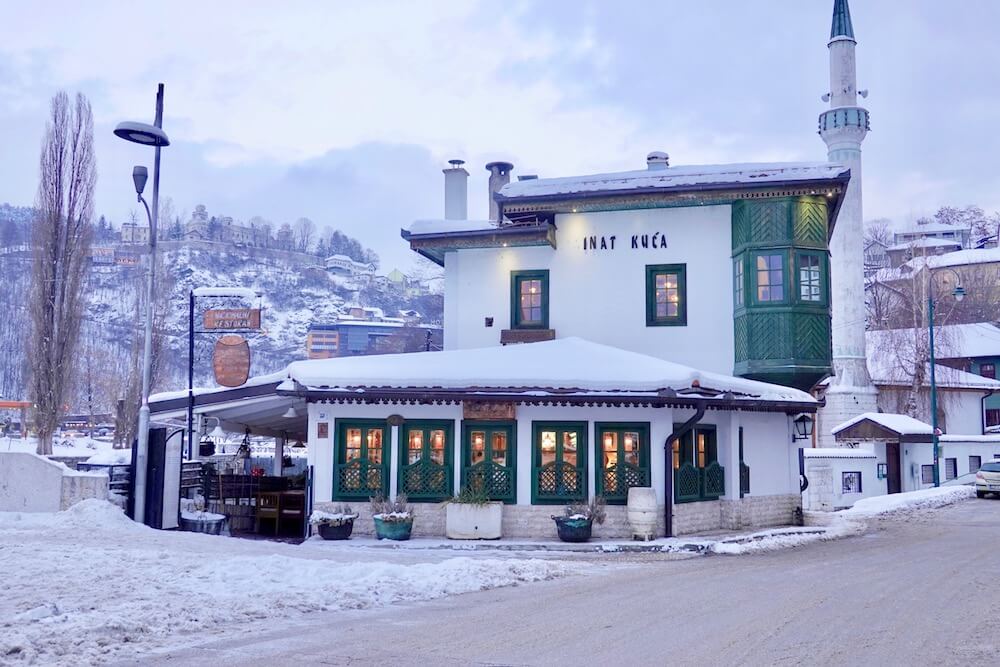
Dig into a steaming bowl of Klepe at Inat Kuca, a restaurant with an intriguing back-story. When the Austro-Hungarian Monarchy occupied Bosnia, they wanted to construct a building to demonstrate their authority and power. This would be the grand City Hall building, which they wanted to build at a location along the right bank of the Miljacka River. However, this would require the demolition of the houses in the surrounding area, including one that belonged to a local called Benderija. However, Benederija stubbornly refused to agree to the demolition and after a long bout of negotiation, only acquiesced if the Monarchy paid him a bag of gold coins and moved his entire house to the other bank of the Miljacka River.
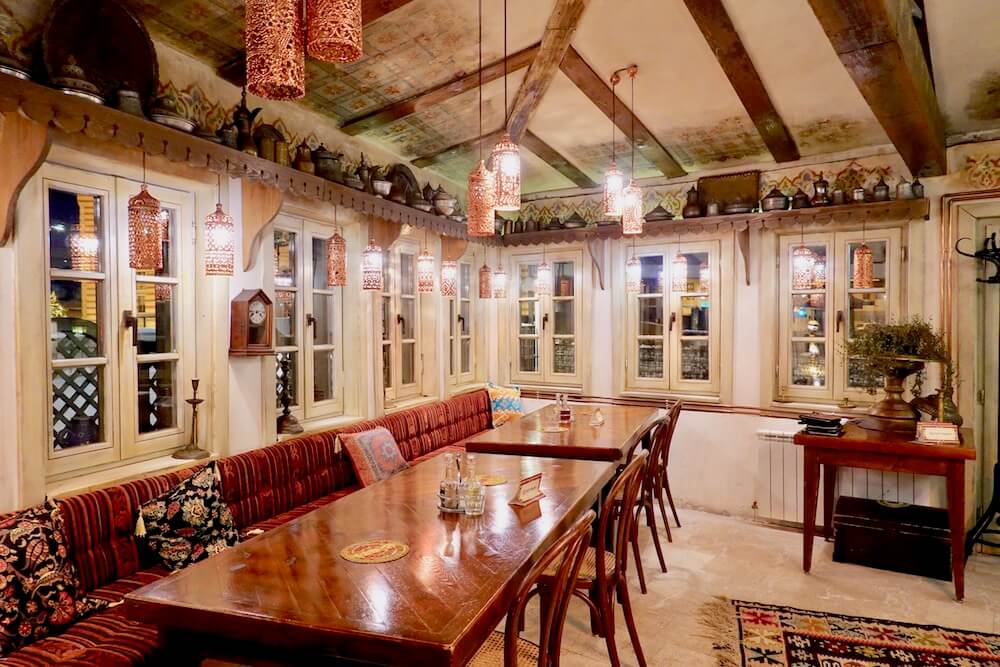
The Monarchy was left with no choice but to do what Benderija asked, and moved his house brick by brick. Inat Kuca is now known as the ‘House of Spite’, and is representative of Benderija’s stubbornness and as a wider projection, the stubbornness and resilience of the Bosnian people. The house has now been converted into a darling little traditional restaurant, which preserves the original exterior and interior.
Inat Kuca
Address: Veliki Alifakovac 1, Sarajevo 71000, Bosnia & Herzegovina
Opening hours: 9am to 11pm, daily
Begova Corba
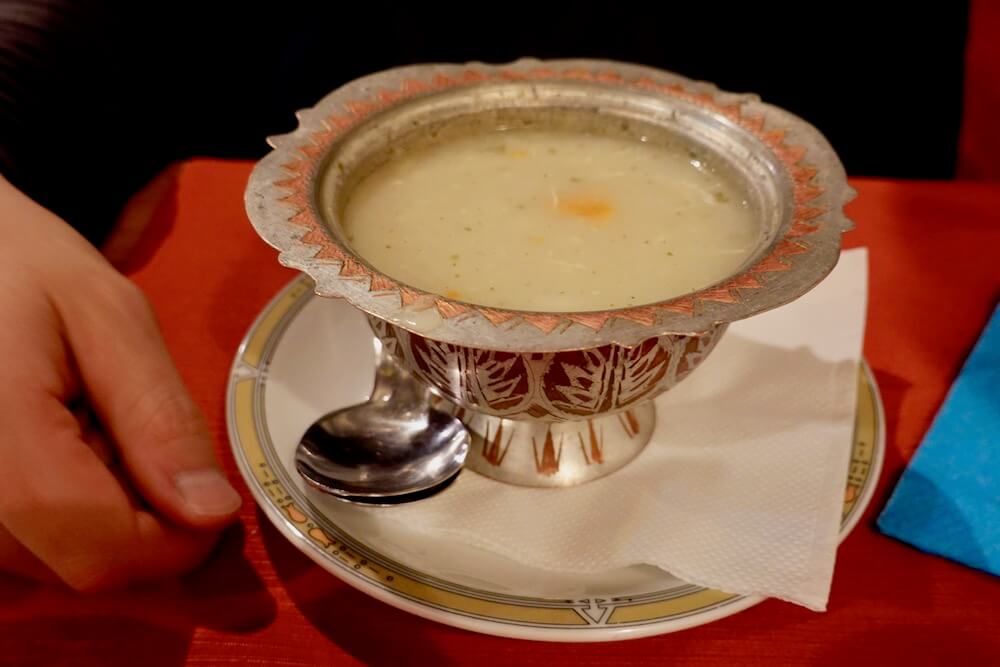
Begova Corba is also known as Bey’s Soup, offering a delicious blend of slow-cooked chicken and vegetables. Often consumed as an appetiser, the resulting stew is creamy and thick. The soup is often served with a generous dollop of sour cream as well.
Bosnians usually indulge in this dish on special occasions. Try it for yourself at any of the traditional Bosnian restaurants in Sarajevo, such as the aforementioned Inat Kuca or Morica Han.
Ascinica
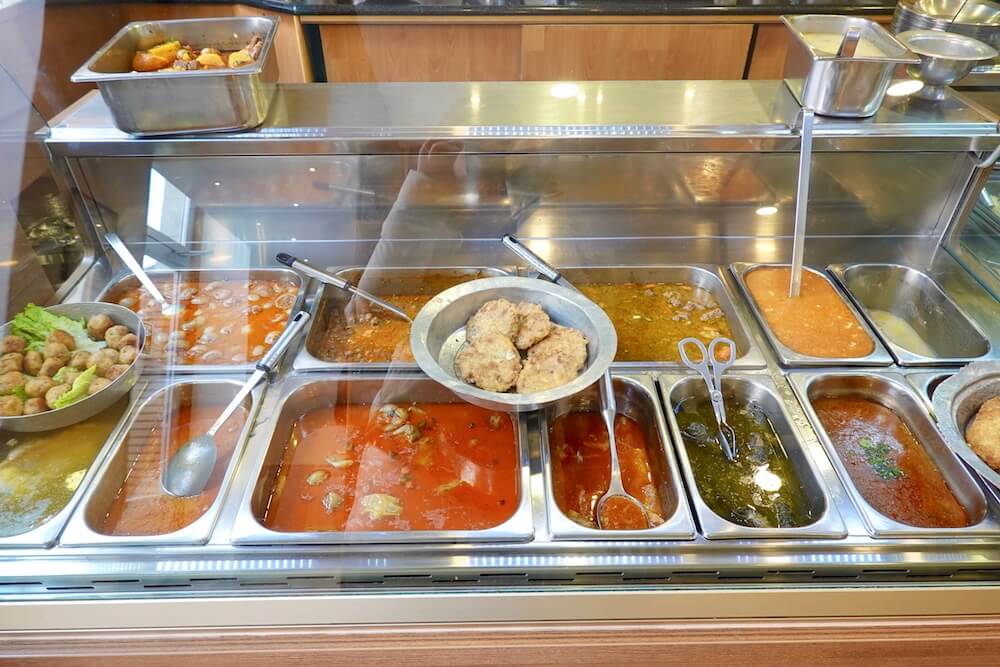
For those living in Singapore, this dish reminds me a little of the ‘caifan’ or ‘mixed rice’ dish that’s commonly found in coffee shops. In Sarajevo, these restaurants called ‘Ascinica’ offer a wide range of ready-made Bosnian stews and dishes.
These are laid out in a glass display case; to order, simply go up to the counter and order what you want.
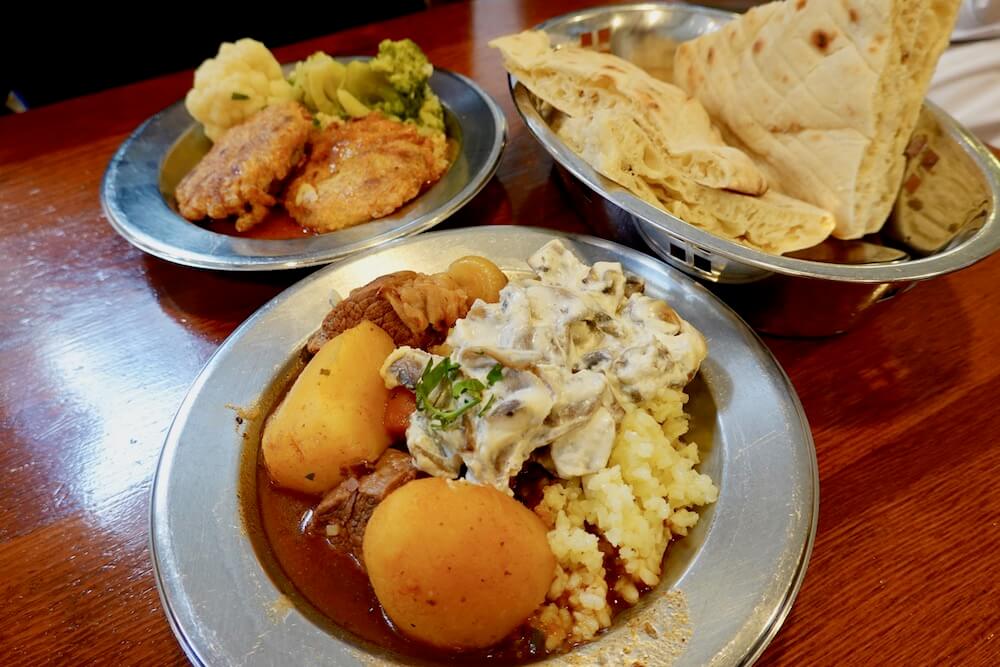
After you place an order, take a seat and the restaurant staff will bring your plate out alongside a serving of bread. My favourite Ascinica is Ascinica Asdz, which boasts two displays of hot home-cooked dishes, a display of salads and another display of desserts. The place is regrettably a little on the touristy side but the food is good and cheap!
Ascinica Asdz
Address: Mali Churciluk 3 Old Town Sarajevo Baščaršija, Sarajevo 71000 Bosnia and Herzegovina
Opening hours: 8am to 7pm, daily
Tufahija
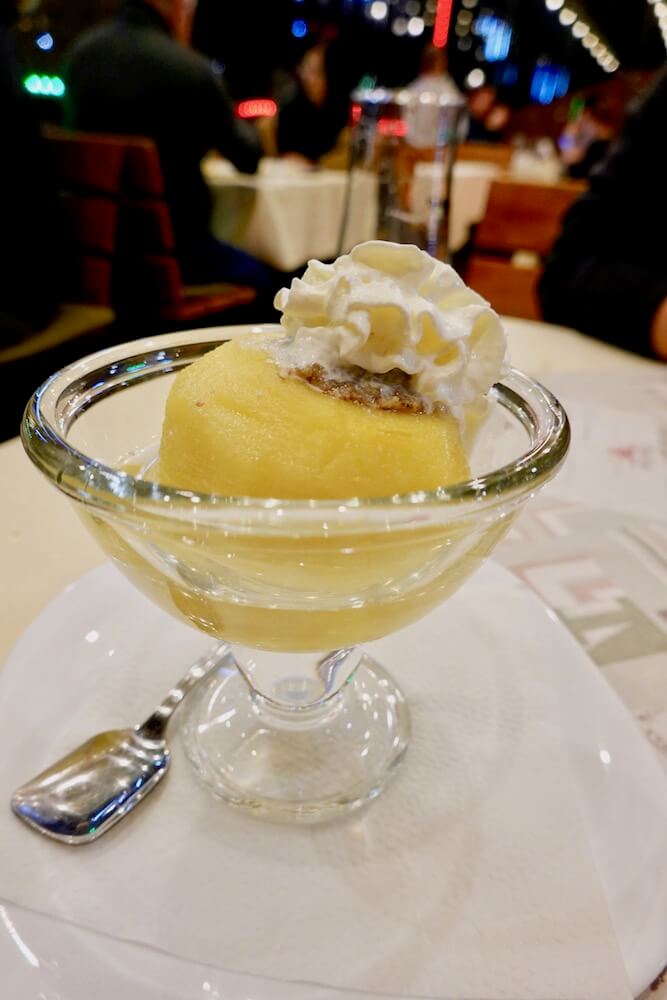
Now onto desserts! The Tufahije is an apple stuffed with walnuts and poached in a sugary syrup. The elegant dessert is served cold and topped with a dollop of whipped cream. If you can’t wait to dig into the dessert, its refreshing taste also makes for a great palate cleanser in between courses.
This dessert can be found in most restaurants and cafés in Sarajevo.
Baklava
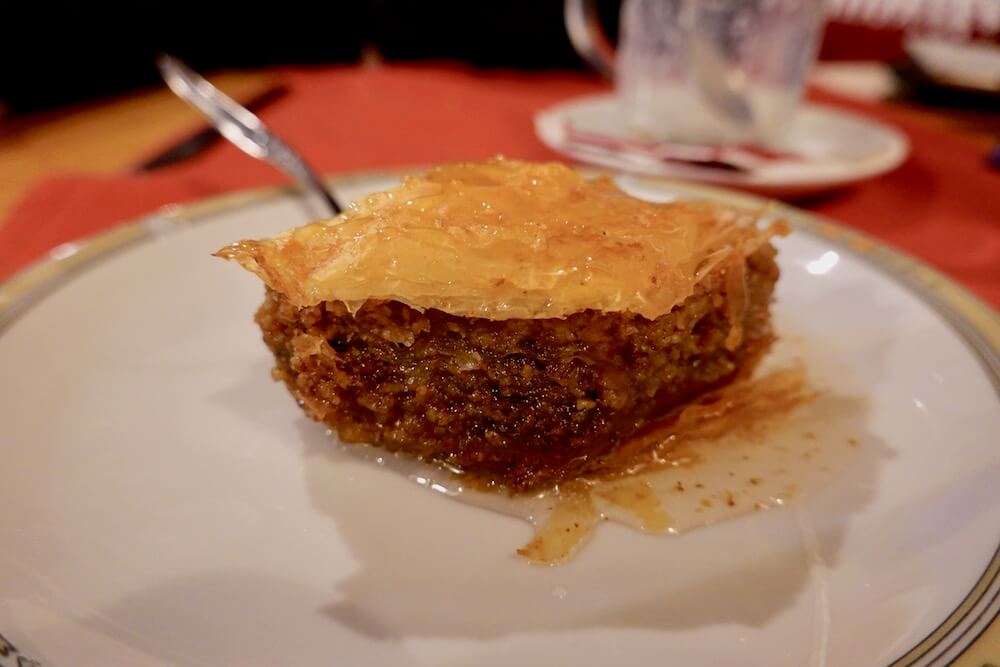
Baklava is a dessert that can be found all across the Balkans. Sheets of filo pastry is filled with generous portions of nuts and honey, culminating in a sticky sweet treat loved by all ages.
Be spoilt for choice at Baklava Sarajbosna, which offers a whopping 70 flavours of Baklava that are on rotation. Popular flavours include cherry, pistachio and cinnamon.
Baklava Sarajbosna
Address: Gajev Trg Bb Ferhadija, Sarajevo 71000 Bosnia and Herzegovina
Opening hours: 9am to 10pm, Mondays to Saturdays; 9am to 8pm, Sundays
Hurmasice
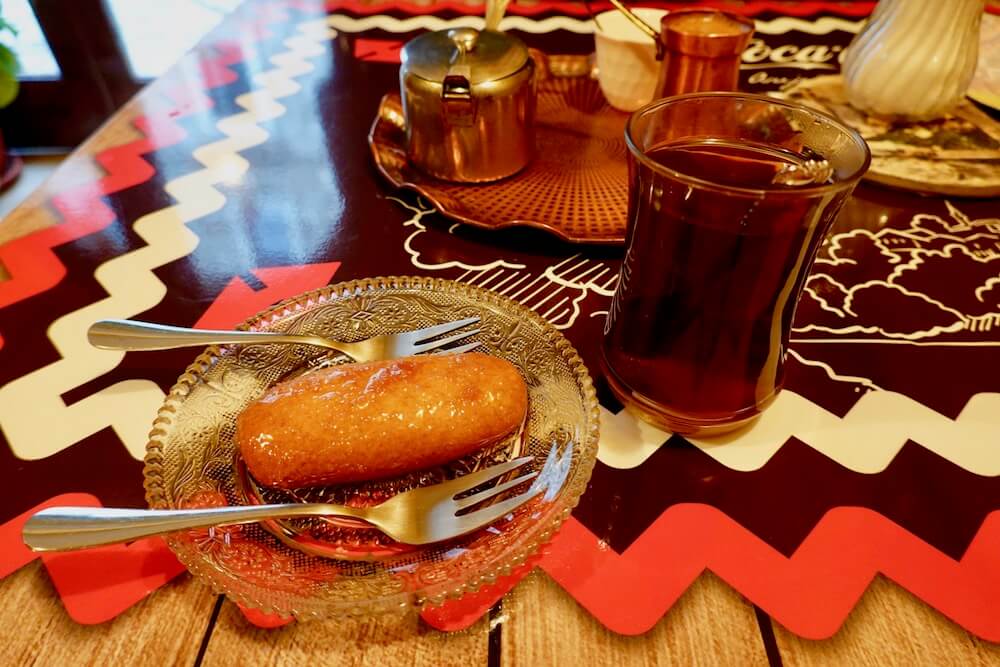
Hurmasice refers to a cylinder-shaped pastry filled with walnuts. The pastry is soaked in syrup, which is made out of lemon juice, water and sugar. The dessert is recognised by its riddled exterior, which results from the confection being pressed against a sieve during the cooking process.
This dessert can also be found in most restaurants and cafés in Sarajevo.
Bosnian Coffee
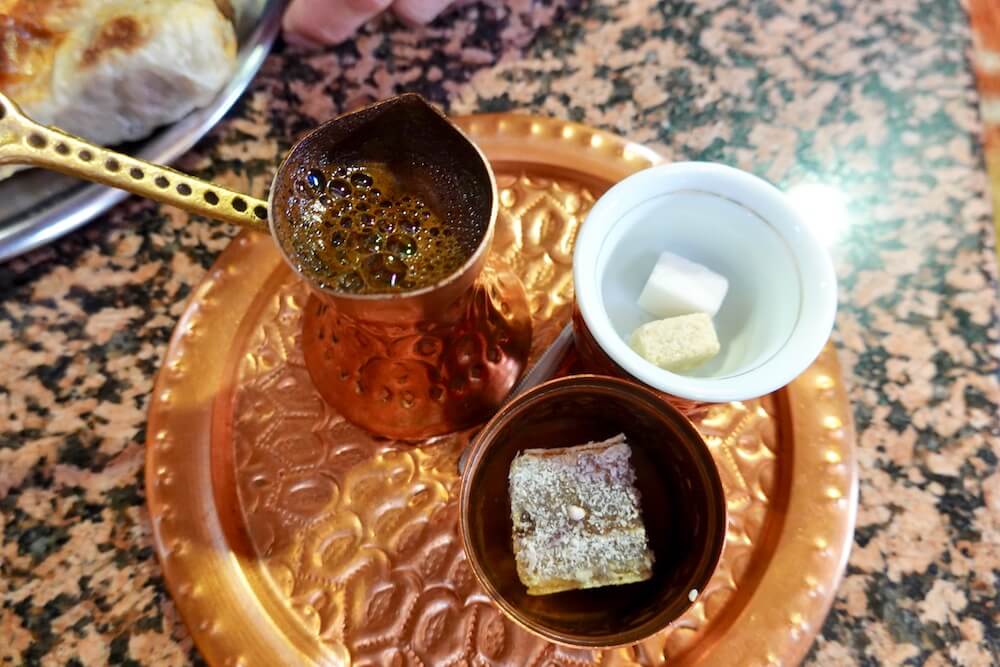
If there’s one thing that the people of Sarajevo are proud of, it’s their coffee. In fact, many locals view Bosnian Coffee as the very heart and soul of life in Sarajevo; it’s not uncommon to see many of them sipping on a cup along the winding alleys of the Old Town. Bosnian coffee is often mixed up with Turkish coffee but as the locals will tell you – they’re different entities altogether!
Turkish coffee is prepared by mixing coffee, sugar and water, which are brought to a boil. The coffee is then served in a small cup on a saucer. The preparation of Bosnian coffee, on the other hand, includes an extra step. Water is first heated in a copper dzezva – a small cup-like copper pot with a flared base – on the stove. After the water comes to a boil, a small amount of this water is set aside in a cup. Coffee is added to the dzezva and placed back on the stove, allowing the blend to come to a boil. This also creates a thick foam. This process may be repeated a few times before the coffee is ready for consumption.
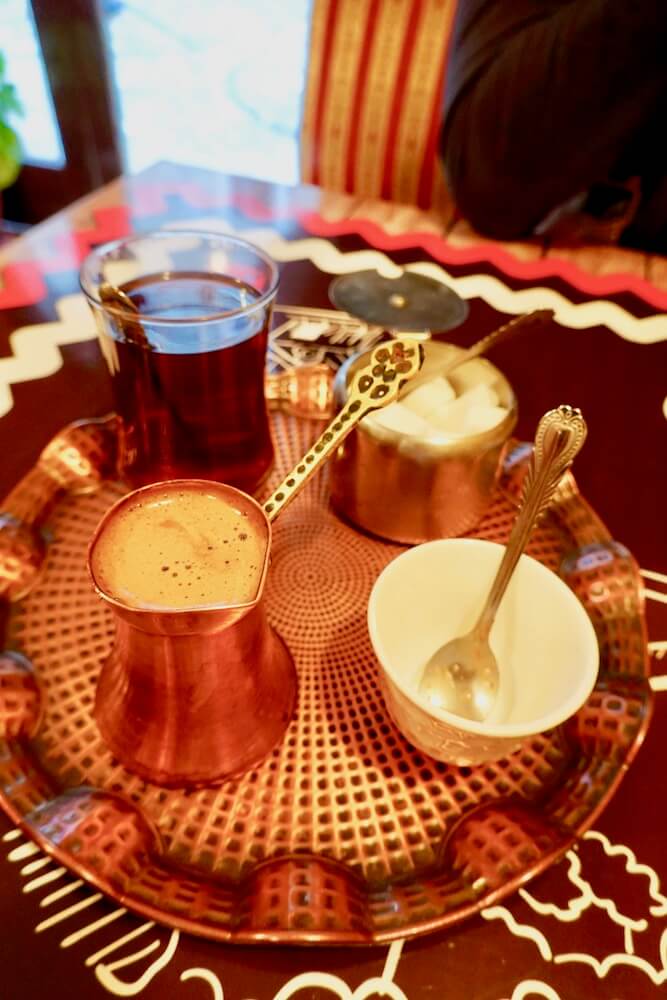
Bosnian coffee is served on a small round tray, comprising the coffee in the same dzezva, a cup of hot water, a sweet dessert, 1 or 2 cubes of sugar, and a glass of water. You add the hot water to the dzezva, spoon out a layer of foam from the top, then pour from the dzezva before adding another layer of foam to the cup. Add sugar if desired (most Bosnians take their coffee black!) and close your eyes to savour the robust fullness of flavour. If you wish, you can add your sugar the Bosnian way – first, take a sugar cube and dip the tip of it into the coffee. Touch the same sugar cube to your tongue before following up with a sip of coffee.
The coffee is hot, thick and strong; the bitterness balanced by the accompanying sweet treat that you’re meant to dip into the coffee. Some will tell you not to drink the last bit of coffee that’s left in the dzezva; this part resembles a thick coffee sludge.
Indeed, coffee is seen as not just a beverage, but as a way of life in Sarajevo as well as the rest of Bosnia and Herzegovina.
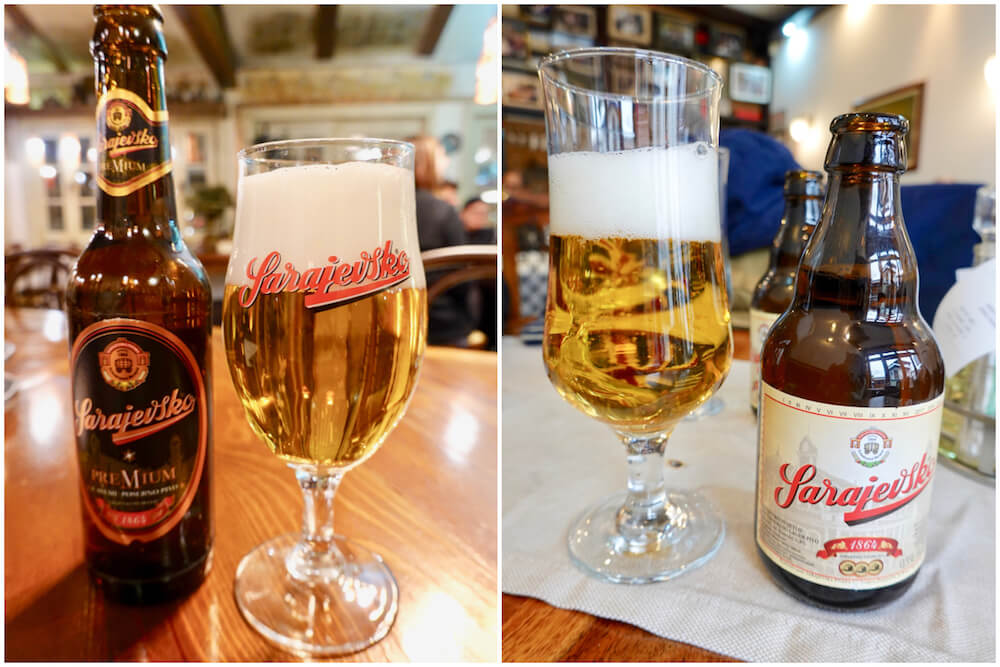
If you wish, you can also sample the local Sarajevsko beer.
How many of these do you wish to try? Visit Sarajevo with a heart (and stomach) open for adventure and you won’t be disappointed.

0 Comments Add a Comment?